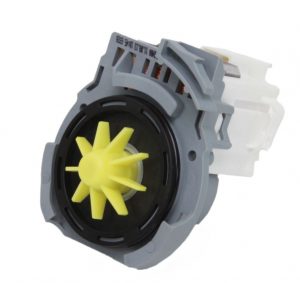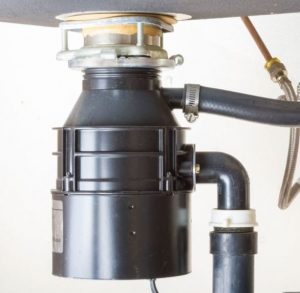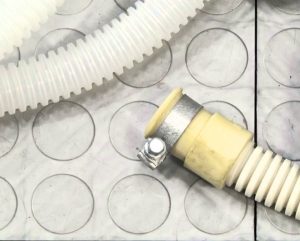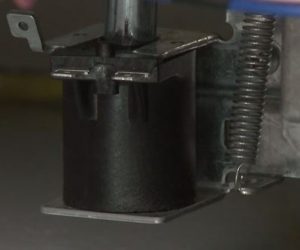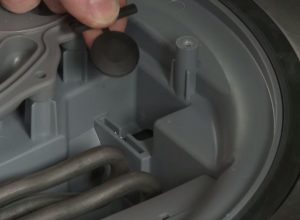Is your dishwasher not draining properly? Here’s how to fix it.
If water is standing at the bottom of your dishwasher, it means that there is a problem with draining. It may be so inconvenient to have dishwasher not working properly.
There are two main reasons for your dishwasher failing to drain:
- The first one is kinks and clogs. This type of fault is simple to fix and you can cope with it by yourself.
- The second reason is more difficult and requires a replacement part or professional repair, but at first, you should try some basic troubleshooting, which will help you to diagnose where exactly the problem is.
Important! Do not forget to disconnect the dishwasher from the electric network before starting diagnostics!
Follow these simple tips to get your dishwasher draining properly:
-
Check the drain hose
If the hose that connects the dishwasher with the sewage system is kinked or pinched, the water cannot run properly off the machine. Straighten it up, turn your appliance on, and try to start the draining cycle again.
-
Check the filter area
Always scrap big chunks of leftover food from dishes before loading them into the dishwasher to prevent filter clogging with pieces of food, napkins and other things. Check the filter for any food debris causing an obstruction. Remove the bottom dish rack to get access to the basin of the dishwasher. Then remove the filter tube with an anticlockwise twist. If the filter is clogged up with food debris, clean it up thoroughly and your appliance will be ready to work again. Avoid a clogging of the filter system by cleaning it once a week.
-
Check the drain line
Toothpicks and other debris can pass through the filters and cause the clog in the drain hose or at the place where the hose and sewerage are connected. The good news is that you can clean it by yourself. At first, prepare a bucket for draining water. Then disconnect the drain hose from the sewer and turn on the drain cycle. If water flows from the hose with pressure, it means that the clog occurred between drain hose and sewage system. If water does not flow, the clog formed in the drain hose itself. Clear the blockage by running a long flexible brush through it and then reconnect the hose. Run the dishwasher on a short cycle to check if there is any improvement in draining the water.
-
Check the drain pump
It is another common reason why your dishwasher is not draining. If the design of the appliance allows you to reach the drain pump, you can clean it by yourself. Remove the drain pump cover, which on most Bosch dishwashers will be secured with a single screw. Remove that using a screwdriver and then take off the cover by gripping the tab on the left and lifting it up and towards you. With the cover removed you will have access to dishwasher drain pump. On top of the pump are impeller blades, which are used to force the water out of the basin and into the pump. Check them for bits of food debris, which could be preventing the water from draining. Cleaning the drain pump requires some skills, so if you are not confident you will do everything correct – it is better to delegate this job to the professional technician.
So, you have cleaned all the hoses and filters. Now, you can plug your dishwasher in and restart it. If the dishwasher is still not draining, you might want to consider making an appointment with a professional technician. Contact us (818) 600-2559 and we will send our qualified technician to repair your dishwasher.
Thing that might be causing the issue:
-
Defective drain pump
The drain pump uses an impeller to force water through the drain hose. If the pump motor is not working, the water won’t drain from the dishwasher. pump motors can fail both electrically and mechanically. You can use a multi-meter to help determine if the motor is failed electrically by testing for continuity a continuous electrical path present in the motor. If the motor tests negative for continuity, it will need to be replaced. Be aware that some models only have one motor to both circulate and drain the water.
-
Clogged garbage disposer
If the dishwasher’s drain hose is connected to a newly installed garbage disposer, check to see if the knockout plug has been left in the disposers drain tube. The knockout plug needs to be removed in order for the dishwasher to drain. If the plug has been removed, it is possible that the disposer is clogged with debris. Try cleaning out the drain tube to clear any obstruction.
-
Obstructed drain hose
The drain hose itself can become obstructed as well. Since obstructions most commonly occur at either end, you should remove the drain hose from both the disposer and the drain pump to inspect it.
-
Defective drain solenoid valve
Some models have a drain solenoid valve that opens to allow the water to drain. If the solenoid fails, the valve will not open. You can use a multi-meter to test the drain solenoid for continuity to help determine if the valve has failed electrically or not.
-
Malfunctioning check valve or ball
A check valve prevents water from returning to the dishwasher once it has been pumped out. If the check valve gets stuck in a close position, the water won’t drain properly. You can try cleaning the valve but if the problem continues, you should replace it. On some models, the check valve uses a check ball to prevent water from backing up into the tub. The water will not drain if the ball gets stuck. If the check ball continues to get stuck in the valve, it should be replaced.
The statistical analyses shows that we can say that dishwashers are more resource efficient than hand washing – using less work time, less energy and less water to wash the same amount of dishes. It is reasonable of you to get your dishwasher working properly again. Call us (818) 600-2559 to schedule an appointment. We will send our professional technician to fix your appliance as soon as possible.

